Fernand Léger: Art in Full Swing
With a style falling somewhere between Cubism and naïve art, Fernand Léger’s paintings make a positive impression on the viewer. His primary colors and plump figures are almost universally appealing, and collectors from all over the world appreciate the creations.
Fernand Léger was born in 1881 in Argentan, Normandy, France. The son of a cattle breeder, he moved to Paris at the age of 19 to train as an architect. He shared a studio with the painter André Mare, and associated with other artists and intellectuals in the cultural milieu, such as Marc Chagall, Amedeo Modigliani, Guillaume Apollinaire and Blaise Cendrars. Léger was fascinated by the city, and soon met his first wife, Jeanne-Augustine Lohy, whom he married in 1919.
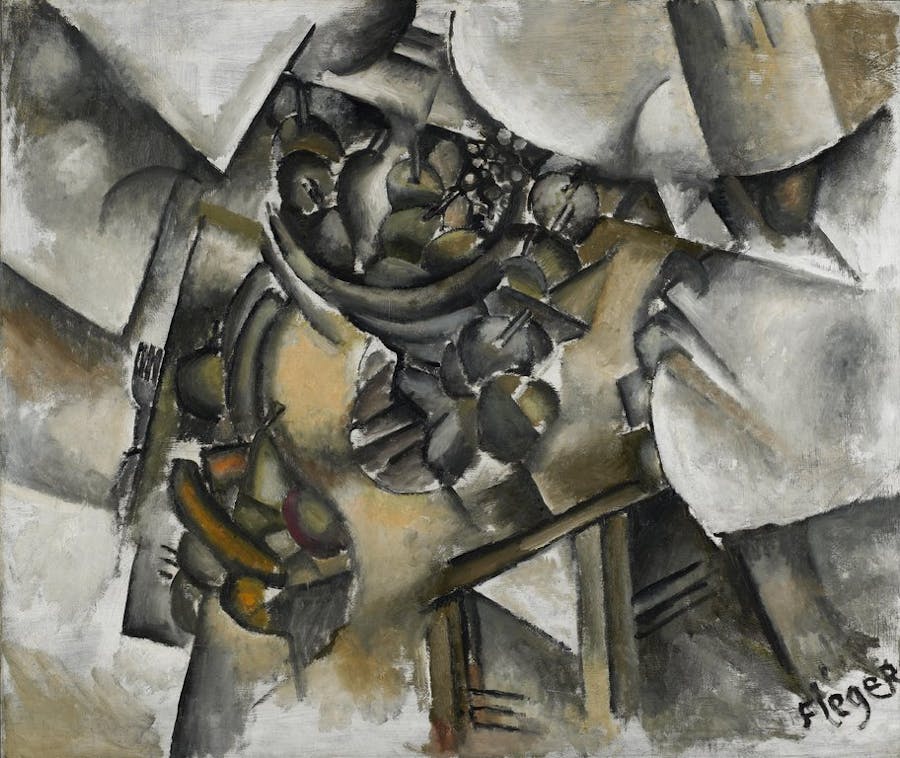
Léger was inspired by the life and culture around him, attending shows, the circus and gallery exhibitions. He was particularly affected by the 1907 Cézanne retrospective at the Grand Palais, and adapted the artist’s characteristic flatness and swathes of color. Léger became one of the first Cubists, alongside Georges Braque and Pablo Picasso, and his style is distinctive even in his earlier works such as Le Compotier sur Table (1909) and La Couseuse (1909). He introduced the concepts of primary colors and contrasts in his work Femme en Bleu (1912) – color theories that would become characteristic of his later great works.
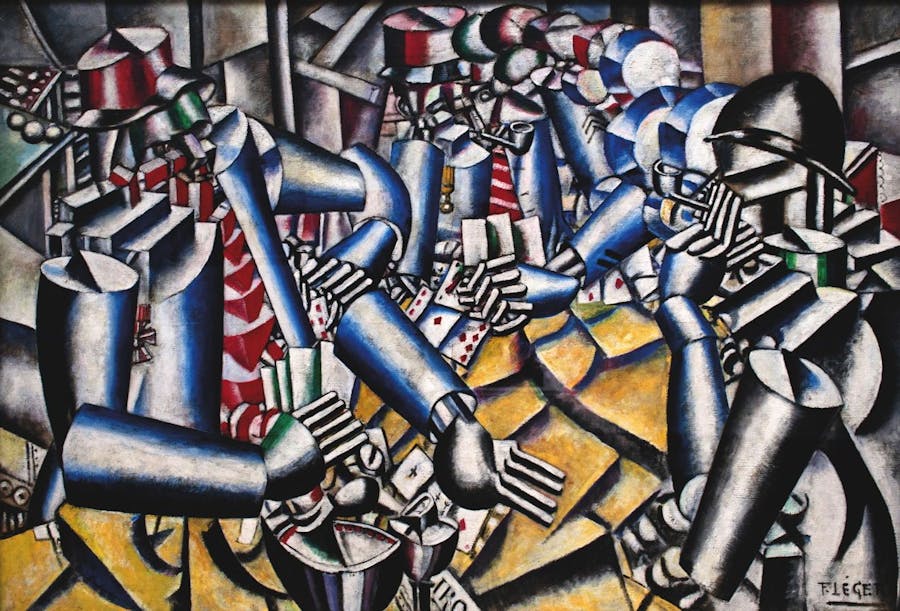
His art is highly populated, with reds, blues and yellows entangled in a marasmus of figures and faces that form the great chaos of the world. They were often related to the horror of war – like many artists, Léger was mobilized during World War I, first fighting on the front lines then later becoming a stretcher-bearer. However, where other artists testified directly, Léger preferred to paint colorful, sometimes futuristic abstractions of his experiences, such as La Partie de Cartes, (Soldiers Playing Aards) (1917). After the war, the Swedish Ballet hired Léger to create costumes and sets for Skating Rink (1922) and La Création du Monde (1923). In 1924 he directed a Futurist-inspired film, Le Ballet Méchanique, in collaboration with the director Dudley Murphy, the composer George Antheil, and the artist Man Ray.
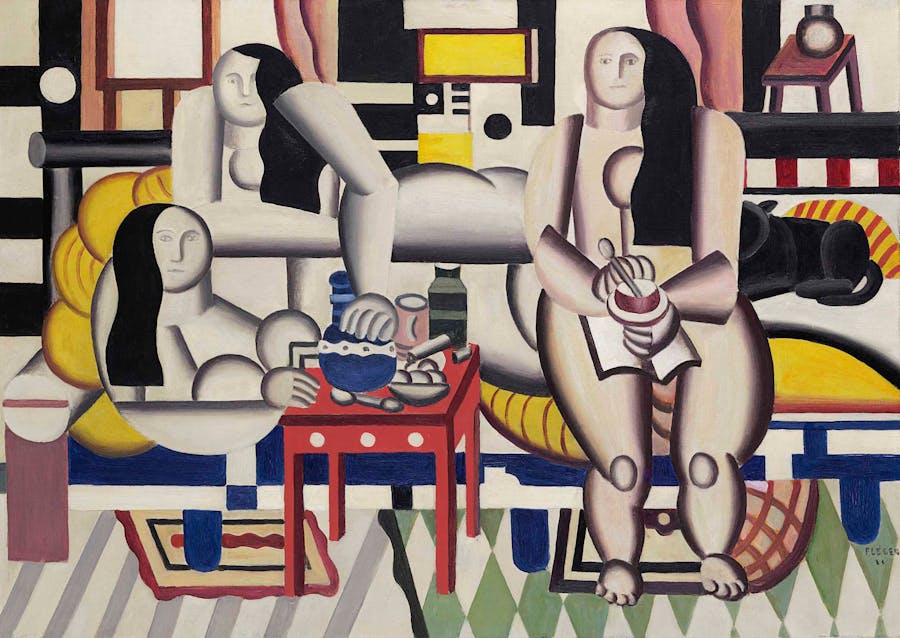
This marked a turning point in his career: moving away from Cubism, he began exploring the Futurist idea of representing dynamic forms in motion. Léger revolutionized the world of advertising displays by using large, geometric, flat surfaces, innovative typographic lettering and the isolated presentation of objects. In 1928, he met the Belarusian artist Nadia Khodasevich, who became his lover and assistant in his workshop, and who played a considerable role in his work and life.
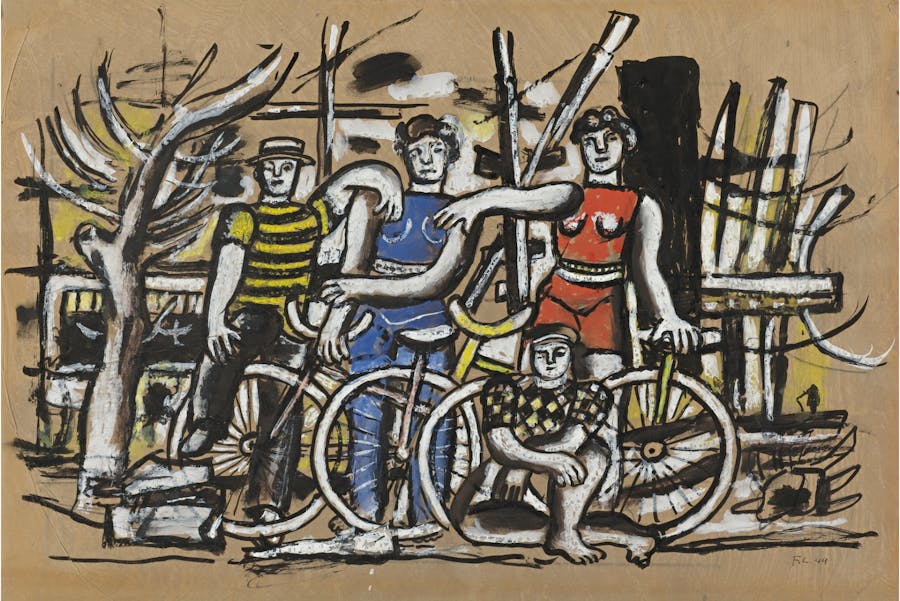
The 1930s were years of international recognition. Léger’s work was exhibited in major museums, such as the Kunsthalle in Zurich and the MoMA in New York, and he himself traveled all over the world. The Popular Front in France arose in 1936, and as an artist with Communist leanings, Léger was chosen to paint six oversized panels to be displayed to the public. This sort of work appealed to Léger, as he wanted art to be for the people. Only one, Le Transport des forces/Transport Forces, remains, and is now displayed at the Musee National Fernand Léger, in Biot, France.
The Nazis declared him a degenerate artist, and when World War II broke out, Léger fled to New York City. Nadia Khodasevich remained in France and put their workshop at the service of the Communist party. Meanwhile, Léger further developed his style, beginning to project pools of color beyond their black outlines, as seen in The Four Cyclists (1948).
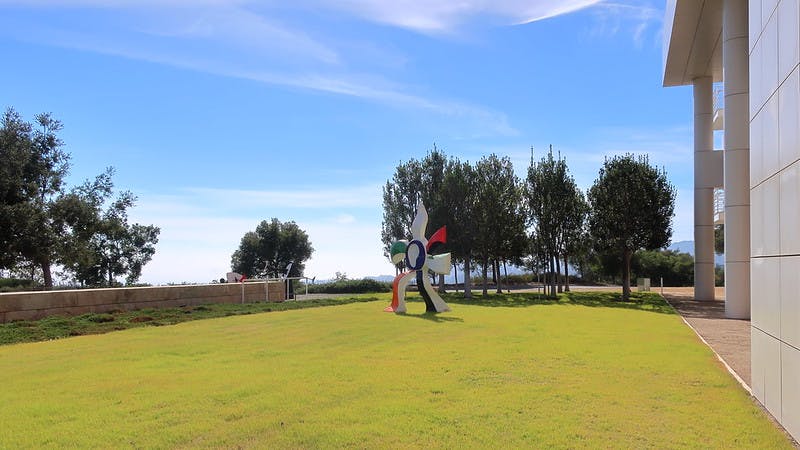
Léger returned to France in 1945, and continued his focus on creating art for the people. His painting around this time became less abstract and celebrated the working class, in works such as Les Constructeurs (1950). He offered the painting to the CGT (French General Confederation of Labour), but they refused it because it was considered too stylized. Léger’s wife Jeanne-Augustine Lohy passed away in 1950, and he married Nadia Khodasevich in 1952. The two moved to Gif-sur-Yvette, and began designing stained glass windows for the Sacré-Cœur church. Léger also began experimenting with monumental sculpture, notably with his Walking Flower series. One of them now adorns the tomb of the painter, who died in 1955.
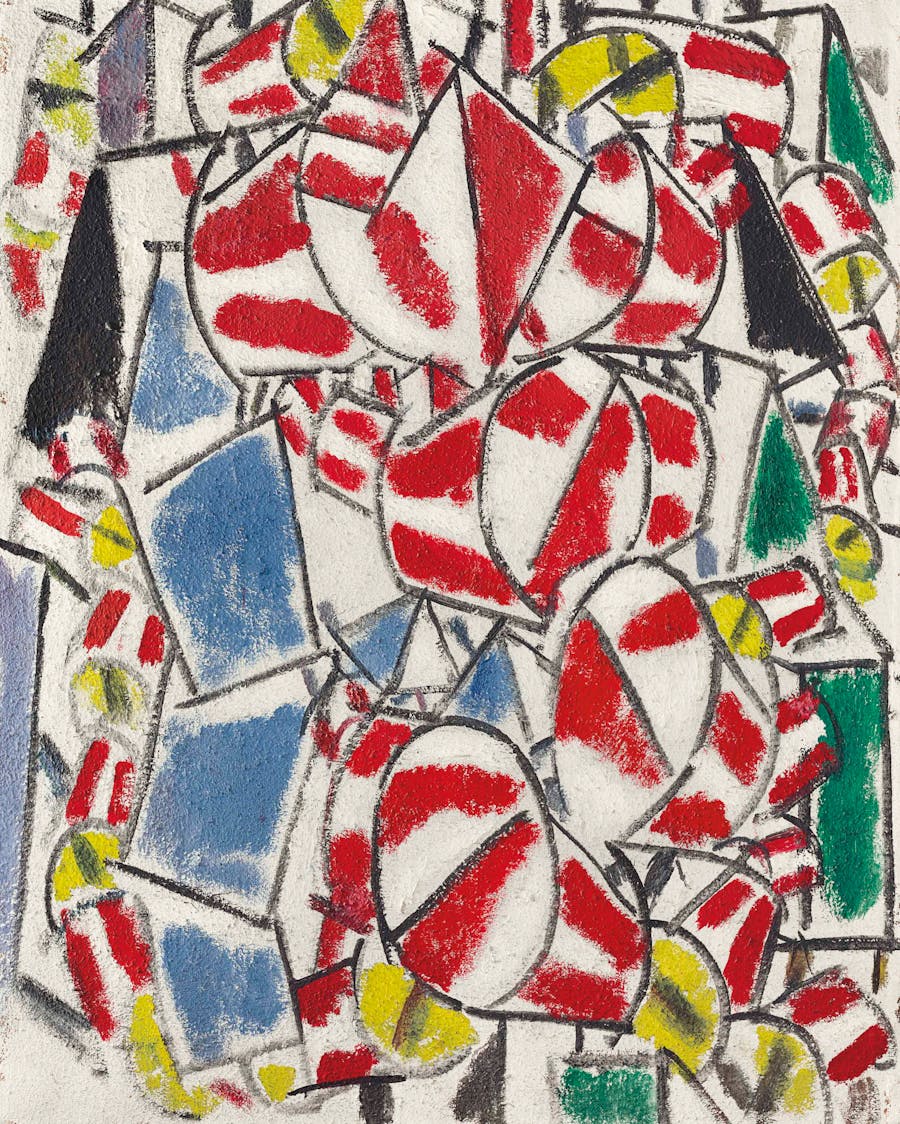
Though a famous artist, Léger was also a recognized teacher. Some of his students included Nicholas de Staël, Serge Gainsbourg, Louise Bourgeois and Sam Francis. There are three museums in France dedicated to Léger’s work, with one each in Biot, Lisores, and Argentan. The monumental nature of many of Léger’s paintings and sculptures command high prices on the art market. In 2017, Contrast of Shapes (1913) sold for $70 million at Christie’s New York. Not all of his pieces are so out of reach, however – smaller ceramic pieces have sold at Christies for $10,000 and sketches are available from a few thousand dollars.


